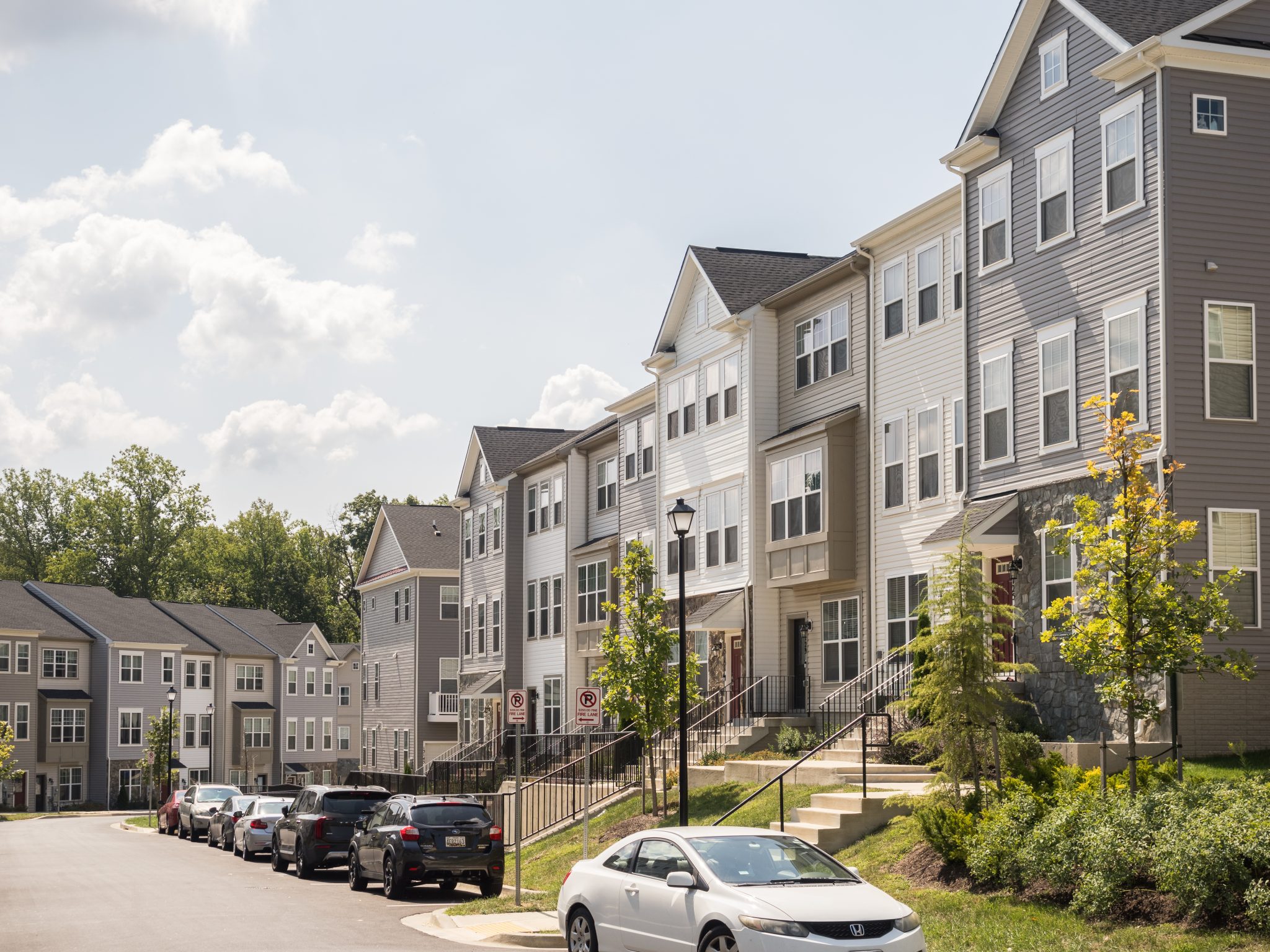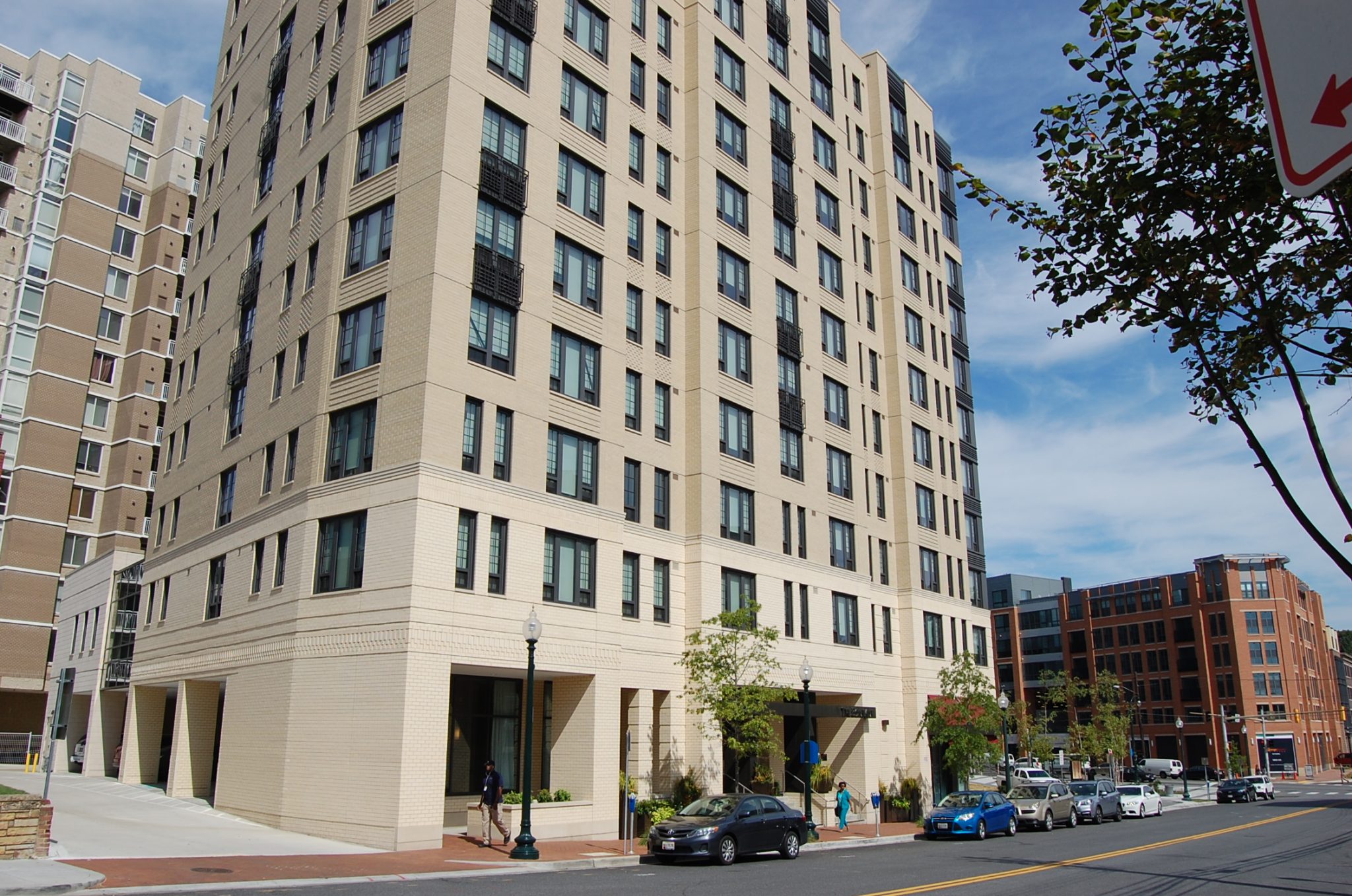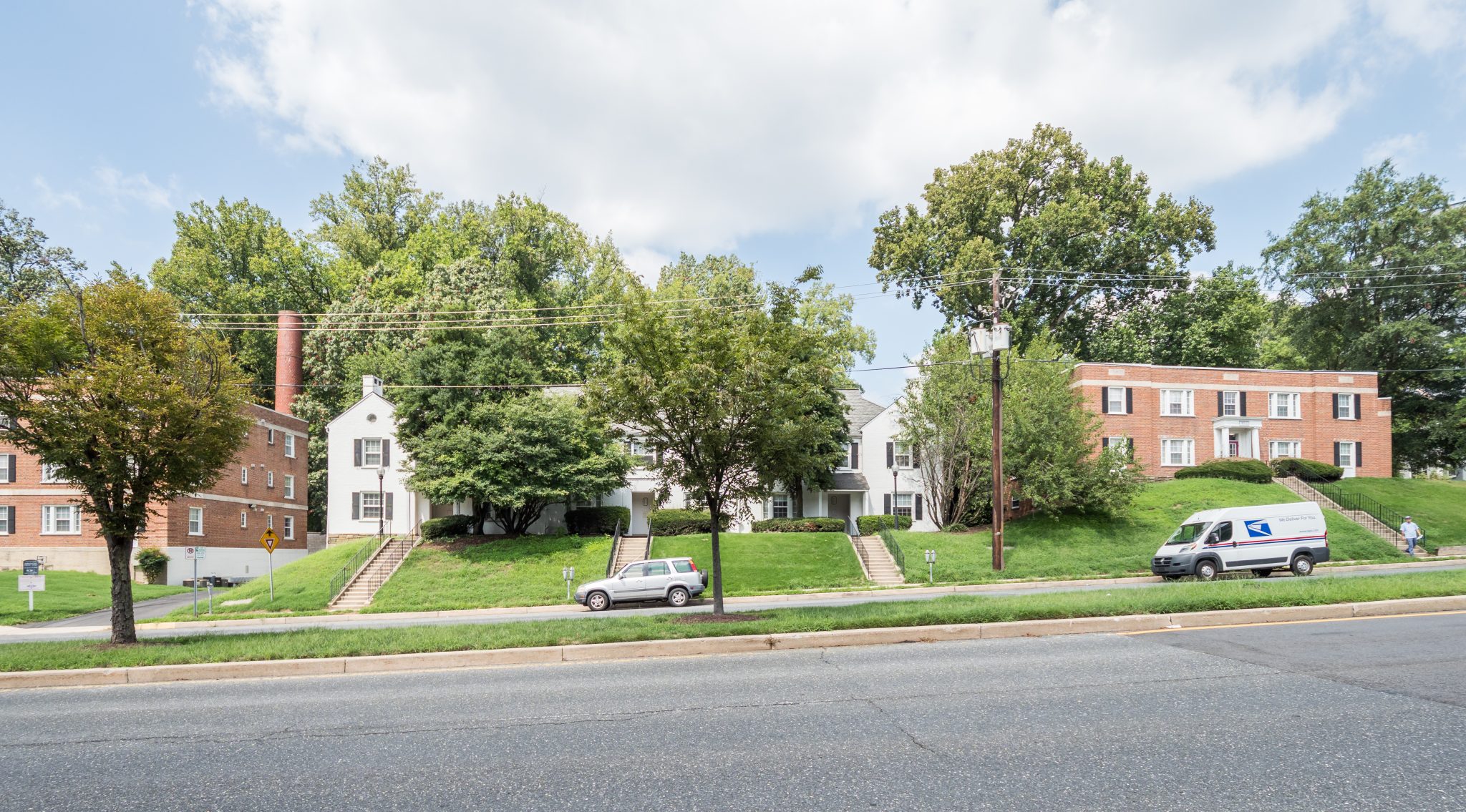Overview and key facts
Montgomery County has a collection of tools and policies that help produce and preserve affordable housing. This page provides more details on the terms, policies, and programs that involve building and preserving affordable housing in Montgomery County. While the Planning Department does not administer housing programs directly, it plays a key role in analyzing housing needs, shaping policy, and collaborating with developers and county agencies to advance affordable housing goals.
Key terms
- Area Median Income (AMI): Each year, the U.S. Department of Housing and Urban Development (HUD) calculates the Area Median Income (AMI) for every region using data from the American Community Survey. AMI is the middle point of household incomes in a region, half of households earn more, and half earn less. AMI is used to determine who qualifies for affordable housing programs and how much they pay. You can find the current AMI using this query tool by HUD.
- Income-Restricted Affordable Housing: Refers to housing that is offered at lower rents or subsidized to make it more affordable for people with limited incomes. To qualify, households must earn below a certain income threshold, often based on a percentage of the AMI.
- Low Income: Refers to households earning up to 50% of AMI. This includes extremely low income (up to 30% AMI) and very low income (31-50% AMI)
- Moderate Income: Includes households earning between 50% to 70% of AMI.
- Workforce Income: In Montgomery County, this refers to households earning between 70% and 120% AMI. Unlike HUD-defined income categories, this range is specific to the County’s Workforce Housing Program, which targets moderate- and middle-income workers—such as teachers, nurses, and first responders—who earn too much for traditional affordable housing but still face high housing costs.
- Market-rate Housing: Units rented or sold without any affordability restrictions or public subsidy. Prices are set by the private market, based on demand, location, amenities, and other factors.
- Naturally Occurring Affordable Housing (NOAH): Market-rate housing that is affordable due to age, location, or condition, not because of subsidy. These units are often at risk of rent increases or redevelopment unless preserved.
Key local housing policies, programs and funding mechanisms
Housing Choice Voucher (HCV) Program: The main form of rental assistance in the county is the federally funded HCV program, administered locally by HOC. The program provides a rent subsidy that allows households to find housing in the private market while paying no more than 40% of their income toward rent at the start of the lease, based on their income and HOC’s payment standard. Households must complete annual income recertification to remain eligible and ensure the subsidy amount remains accurate.
Income levels served: Low income
Rental Assistance Program (RAP): The RAP is a referral-based initiative administered by the Department of Health and Human Services (DHHS). It provides monthly rent subsidies to currently homeless individuals and families, assisting them in securing and maintaining stable housing. Subsidies are paid directly to landlords on behalf of eligible tenants. To qualify, applicants must meet income and residency criteria and be referred through the County’s homeless services system.
Income levels served: Low income
Revolving County Housing Production Fund (HPF): The HPF is a $100 million revolving loan fund administered by the Housing Opportunities Commission (HOC), the County’s public housing authority, to accelerate mixed-income housing development. Funded through annual County appropriations over 20 years, the fund issues short-term loans, typically five years, that are repaid after construction is complete, allowing the same dollars to be reused for future projects.
Income levels served: Low income; Moderate income
Housing Initiative Fund (HIF): The HIF is a locally funded tool that provides flexible loans—and in some cases, grants—to for-profit and nonprofit developers to build, acquire, or preserve affordable housing in the County. Administered by the Department of Housing and Community Affairs (DHCA), the HIF supports a range of housing types and prioritizes projects that serve the lowest-income households and address the most pressing housing needs. Most projects funded through the HIF must include units affordable to households earning at or below 70% AMI, with deeper affordability encouraged.
Income levels served: Low income; Moderate income
Payment in Lieu of Taxes (PILOT): A PILOT lowers, or in some circumstances completely abates, for a period, the county’s real property taxes on rental housing projects in return for a property owner’s commitment to provide affordable housing. Montgomery County has four types of PILOTs: Standard PILOT, By-Right PILOT, Office-to-Residential conversion PILOT, and the WMATA PILOT, the terms of which are all outlined on the county’s PILOT website.
Income levels served: Low income; Moderate income
Low-Income Housing Tax Credit (LIHTC): LIHTC is the federal government’s main tool for creating and preserving affordable rental housing. In Maryland, it is administered by the Department of Housing and Community Development (DHCD), which allocates tax credits to private developers to build or rehabilitate housing. These credits attract private investment to finance affordable housing projects. In return, units must remain income- and rent-restricted, typically serving households earning up 50% and 60% AMI, for at least 40 years.
Income levels served: Low income; Moderate income
Affordable Housing Opportunity Fund (AHOF): This fund provides short-term financing to developers aiming to acquire properties at risk of losing affordability. By offering competitive capital, AHOF enables developers to preserve affordable housing and prevent displacement of current residents. The fund is managed by the National Housing Trust Community Development Fund (NHTCDF) and combines county funds with private lending to support these initiatives.
Income levels served: Moderate income; Workforce income; Market rate/naturally occurring affordable housing
Moderately Priced Dwelling Unit (MPDU) Ordinance: Montgomery County’s MPDU program is one of the nation’s first mandatory, inclusionary zoning laws. It was implemented in 1973 to help meet the goal of providing a full range of housing choices in the county for all incomes, ages, and household sizes.
- An MPDU is a county-regulated housing unit that must be affordable to households earning up to 65% AMI for garden-style apartments and up to 70% for high-rise apartments and for-sale units.
- New private developments with more than 20 housing units must set aside at least 12.5%, and up to 15%, as MPDUs for moderate-income households.
- Residential projects with 11 to 19 units are not required to include MPDUs but must contribute to the Housing Initiative Fund (HIF) an amount equal to 0.5% of the purchase price of each unit.
- The MPDU program offers both rental and homeownership opportunities. Rental units are priced below market, while purchase units are sold at reduced prices with restrictions to maintain long-term affordability.
Income levels served: Low income; Moderate income
Workforce Housing (WFH) Program: The WFH Program provides affordable homes for rent and purchase to households who live and work in Montgomery County but earn too much to qualify for the County’s MPDU program. Households with incomes between 70-120% of the AMI can participate in the WFH program.
Income levels served: Workforce income
Nonprofit Preservation Fund (NPF):The NPF is a county program that offers low-interest, short-term loans to experienced nonprofit and public developers to acquire and preserve older affordable housing. Administered by DHCA and HOC, the fund targets naturally occurring affordable housing (NOAH) at risk of rising rents. Eligible properties must be at least 20 years old, include income-restricted units, limit rent increases, and commit to at least 30 years of affordability.
Income levels served: Moderate income; Market rate/naturally occurring affordable housing
Rent Stabilization: In 2024, Montgomery County enacted rent stabilization, which limits how much rents can increase each year. The allowed annual increase allowance is the lesser of two amounts: the local Consumer Price Index (CPI-U) plus 3%, or a maximum of 6%.
Income levels served: Market rate/naturally occurring affordable housing
Right of First Refusal (RoFR): Montgomery County enacted its RoFR law help to preserve affordable housing and to prevent tenant displacement. Before an owner can sell a multifamily rental property with four or more units, they must first offer it to the County, the HOC, or any certified tenants’ organization (in that order). This gives public and tenant-backed entities a chance to purchase the property and maintain its affordability, rather than convert it to market-rate housing.
Income levels served: Market rate/naturally occurring affordable housing; Low Income; Moderate Income; Workforce Income
Montgomery County Homebuyer Assistance Programs: Montgomery County funds two homeownership assistance programs, through the Maryland Mortgage Program (MMP), to support eligible homebuyers with down payment and closing costs:
- The Montgomery Homeownership Program offers a second mortgage of up to $25,000 (or 40% of household income, whichever is less) for any MMP-eligible buyer in the county.
- The Montgomery Employee Down Payment Assistance Loan provides a $25,000 second mortgage specifically for eligible Montgomery County employees.
Both loans are zero-interest and deferred, meaning they don’t require repayment until the home is sold, refinanced, transferred, or after 30 years.
Income levels served: Workforce income
HOC Homeownership Programs: HOC offers several homeownership programs to help Montgomery County residents buy their first home. These include the Mortgage Purchase Program, which provides competitive-rate loans and down payment assistance; a program for current HOC residents transitioning to ownership; and a Housing Choice Voucher Homeownership Option that lets eligible voucher holders apply their subsidy toward mortgage payments.
Income levels served: Moderate income; Workforce income
Frequently asked questions
The recommendations in the Attainable Housing Strategies initiative support the housing recommendations in the update to the county’s General Plan, known as Thrive Montgomery 2050. As mentioned in the Third Place Blog on the topic, while much has been said about Thrive Montgomery 2050’s proposal to encourage more Missing Middle Housing types, this recommendation is one of many in the plan. Thrive Montgomery 2050 contains wide-ranging policies that address both income-restricted and naturally occurring affordable housing and attainable housing. These policies involve the refinement or creation of new financial, zoning, and or policy tools.
- The program’s implementation involves both the public and private sectors, with the local government performing regulatory and administrative functions, and the building industry producing the housing.
- Between 12.5 and 15% of the total number of units in every subdivision or high-rise building of 20 or more units must be moderately priced, according to the MPDU regulation.
- Effective October 31, 2018, developments with less than 20 but more than 10 units are required to make a payment to the Housing Initiative Fund in lieu of an MPDU requirement on-site. For more information, contact the Montgomery County Department of Housing and Community Affairs.
- Three agencies within Montgomery County are key to the implementation of the MPDU program:
Montgomery County Planning Department
Department of Housing and Community Affairs (DHCA)
Housing Opportunities Commission (HOC).
- The Montgomery County Department of Housing and Community Affairs lists the income eligibility for the MPDU programs on its website. The agency categorizes eligibility by for-sale dwellings and rentals (generally 65% of area median income for garden-style, 70% of area median income for high-rise apartments) and for workforce housing (80 to 120% of AMI).
- Income limits are based on the area median income set by the United States Department of Housing and Urban Development (HUD) for a particular fiscal year.
The Department of Housing and Community Affairs tracks the number of MPDUs produced.
In 2004, the Montgomery County Council amended the MPDU control period governing for-sale MPDUs from 10 years to 30 years and for rental MPDUs from 20 years to 99 years.
- Bonus Density: The most commonly used incentive is bonus density. Chapter 59 (the Zoning Code) has a three-tiered bonus density system for going above 12.5% MPDUs.
- Additional Height: If a project exceeds 12.5% MPDUs, the height limit of the applicable zone and master plan does not apply to the extent required to provide the MPDUs.
- If a project provides 25% MPDUs, the applicable school and transportation impact taxes are discounted by an amount equivalent to the lowest standard impact tax in the county for the applicable dwelling type.
- As an example, impact taxes are generally the lowest in the infill impact areas (schools), and red policy areas (transportation). Projects with 25% MPDUs built in those areas will have all their impact taxes waived. Projects built in the turnover impact areas (schools) and orange, yellow, and green policy areas (transportation) would have school impact tax discounted by the amount of impact tax charged in infill impact areas and the transportation impact tax discounted by the amount of impact tax charged in red policy areas.
- 15% is mandatory in the Bethesda Downtown Sector Plan area through the Bethesda Overlay Zone, the Silver Spring Downtown and Adjacent Communities Plan, the Great Seneca Plan, and the Takoma Park Minor Master Plan Amendment.
- Effective on October 31, 2018, planning areas where 45% of the United States Census tracts have a median income of 150% of Montgomery County’s median income will have a legal requirement to provide 15% MPDUs.
- View a map of the planning areas with a legal requirement for 15%.
The Planning Department’s Research and Strategic Projects team completed a study of housing for older adults that includes a summary of the housing supply and residential projects for seniors in the development pipeline. View the housing for older adults report.
A web map associated with the study includes the following facilities: senior projects in review, senior housing pipeline (divided by type), existing senior housing and group quarters, independent living and active adult homeownership.
View a detailed PowerPoint about the changes made to the MPDU law in 2018.
View the amended Chapter 25A through Bill 34-17 and Bill 38-17.
View the Revised Bonus Density Chart.


